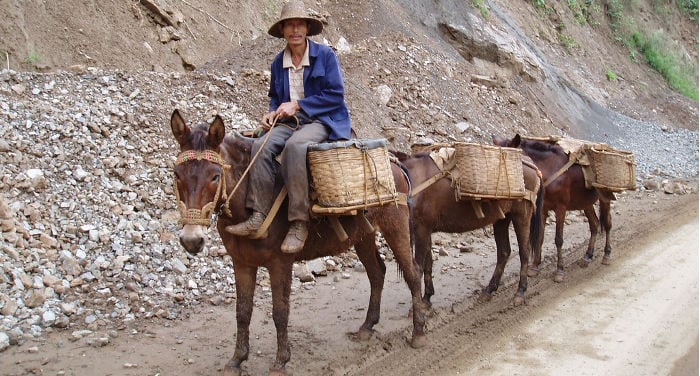
In this article I’ll tell of how you can get to the Vietnamese city of Lao Cai on foot, crossing the border at the Chinese city of Hekou, focusing on my personal experience and my feelings on the day I crossed. I hope that by reading this article you’ll want to travel slowly and lose yourself in the magic of the borders!
Who knows what shape borders will take over time, whether they will increase or disappear to allow people to get around without too many problems. I always imagine them to be impervious and silent places, where the sound of the wind and some stationary soldier accompanies the rivers and mountains, and where you can meet intrepid travelers.
But my imagination was for the most part influenced by the ancient prose of explorers and travelers who passed through these areas.
Then my imagination met reality, and the rivers and mountains took the form of runways and dusty desks, the sound of the wind became a speaker that reminds you to take your passport out and stay in line. And it’s like this that the majority of us see borders in airports, never having crossed a border by land.
I belong to this category, or at least I did belong to that group until just recently. I always wanted to cross a border, and on a warm morning in early July I did so in Asia. I went to the Vietnamese city of Lao Cai from the Chinese city of Hekou.
My trip started the night before. To add a little pathos to the moment I thought I’d get to the Chinese border city via a slow night train, spending the night on a hard mattress on a second class bunk to look out the window at the succession of high-rises giving way to the green rice paddies in the south of China.
I got to Hekou at six in the morning, and since the border only opens at eight, I still had two hours to spend in China to walk along one of its countless borders and get an idea about what the place is like.
The small town of Hekou extends along the Red River, which is called that because during the rainy season it transports lots of detritus that colors the waters red. Along the Chinese shore you can walk among the older Chinese busy doing their morning exercise and look at signs with the party’s propaganda on the importance of friendship with nearby Vietnam.
Taking a look at the other side of the river you can see old hotels in colonial architecture, and hear the noise of the many motorbikes that characterize traffic in all Vietnamese cities.
Waiting to cross the border I also had time to taste the city’s fusion cuisine, which mixes Chinese and Vietnamese flavors. Hekou’s small restaurants serve breakfast in typical Chinese rice rolls, with Vietnamese meat and vegetable filling and a sauce that I would eat almost everywhere in Vietnam called 越南小卷粉 (yue nan xiao juan fen, small Vietnamese rice flour rolls).
Just enough time to test the border from a culinary point of view, then head to the border; the escalators will bring you to the offices where the police will first ask you to pass your backpack through the metal detector and then get in line for passport control.
The control is the usual routine that you go through in airports, but once you finish and leave the offices you’ll officially enter into the border zone, under the big arch written in Chinese characters that indicates the end of Chinese soil, crossing a bridge that spans the river, where Vietnam begins.
I cross the bridge along with some Chinese, while there’s many Vietnamese wearing conical bamboo hats riding bicycles (“nho” in Vietnamese) coming to China from the other way, which is why they’re at the border.
Here too the Vietnamese military invites me to pass my things through a metal detector and asks if I already have a visa for Vietnam. I say no, so he puts a 15 day visa in my passport (at the moment Italy is one of the five countries where you don’t need a visa to enter Vietnam by land if you don’t plan on staying for a period of more than 15 days).
I’m in Vietnam, and I’ve finally crossed my first border on foot! I tour the city of Lao Cai, where like Hekou the main attractions are money exchange, visas, transportation and tourist information; basically everything you would need at a border post.
I buy a ticket for a bus that will bring me to Hanoi, and as I sip my first Vietnamese coffee I realize that Vietnam is an hour behind China, just in time to change the hands on my watch so as not to miss the bus.
The great thing about crossing a border on foot is also that there’s no hostess to remind you to change your clocks, but it’s up to the traveler to be mindful and immerse themselves in a new adventure.
Photo Credits: ![]() Donkey king, Hekou-Manhao by Rene Passet
Donkey king, Hekou-Manhao by Rene Passet



